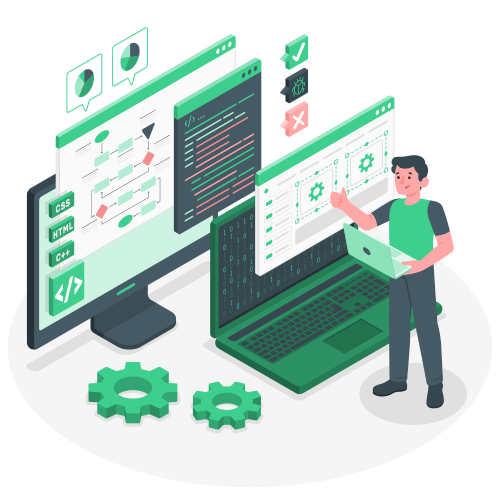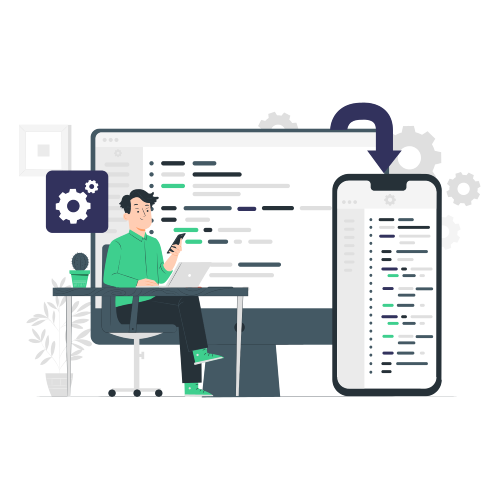ERP
ERP specifications: how to write them properly?
Specifications play a crucial role in ERP implementation projects. They precisely define the business needs and objectives of the project.
In this article, we’ll take you through the key stages involved in drawing up a specification to ensure the successful implementation of your ERP (Enterprise resource planning) system. So, are you ready to start writing a complete and effective specification?
Contents
What are ERP specifications?
ERP specifications are an essential document in the process of selecting and implementing ERP software. It enables the company to define the scope of the project, listing its management needs and specifying the functionalities required of the ERP software.
This document, often sent in PDF format, acts as a model and reference for potential editors and integrators. It enables them to understand the company’s needs and obligations, and to propose a solution that will best meet specific requirements and make a customized offer.
It is advisable to involve the various internal stakeholders when drawing up the specifications, to ensure that all essential requirements are taken into account and that the ERP will meet the company’s business needs.

Why is it necessary to draw up specifications for an ERP project?

Drawing up a set of specifications makes it possible to:
- Evaluate, structure & frame the company’s needs
- Communicate both internally and externally
- Increase the number of relevant responses to the call for tenders
- Protect parties in the event of a dispute if it is well drafted
- Help you make the right choice in terms of the solution that best meets your company’s criteria
Clarity of expectations from the outset of the project is essential to ensure harmonious collaboration between the client and the integrator. If expectations are not explicitly defined, this can lead to misunderstandings, gaps in the understanding of requirements, and discrepancies between the expected results and the solutions provided.
The specification enables the company to specify its selection criteria for the ideal ERP software.
What information should be included in an ERP specification?
Implementing ERP software is a crucial step for many companies. However, managing an ERP project can be complex, requiring careful planning and effective coordination between the various stakeholders.
Here are the steps to follow:
1
The company
Getting to know your company:
This section provides an overview of the company, its activities, objectives and the context in which the ERP system will be implemented. It explains the company's motivations and expectations regarding ERP implementation. To better respond to your call for tenders, the service provider needs to understand your company and its business sector. The specifications must be a model of precision.Describe:
- Your company
- The business lines
- The organization
- The activity
- The products
- The market
- The customer base
Your prospects:
Make your potential suppliers aware of your prospects, so that they too can offer you the most suitable solutions. In fact, it's best to take into account both the current size of the company and its future prospects, in order to:- Avoid choosing ERP software for small structures when the company is growing fast
- Avoid selecting an excessively oversized ERP system, which will increase implementation costs.
2
The processes

3
Requirements
- The functionalities and modules required in the ERP, which may include areas such as sales management, purchasing, inventory, production, human resources, accounting, etc...
- The need for customization and parameterization, which may include specific requirements concerning reports, workflows, access authorizations, etc.
- Very important / critical
- Normal / desired
- Comfortable / non-critical

4
Constraints

- Interfacing with the rest of the information system or with third-party software
- A particular context
- Migration
- Other expectations
- Budgetary constraints
- Deadlines
5
The ERP project
- The type of support required: training (only key users / all users), face-to-face / distance learning, etc...
- Project comitology (Daily, COPROJ, COPIL, etc.)
- Type of contract required (fixed price VS time and materials)

Project management feedback
At the end of an ERP implementation project, several key actions need to be developed to ensure successful closure and a smooth transition to ongoing ERP use.
Verification of deliverables
Carry out a detailed check of all ERP project deliverables to ensure that they are complete, accurate and in line with the requirements specified in the specifications.Additional training and support
Identify any additional training and support requirements for end users. If necessary, organize additional training sessions to answer questions and resolve potential problems, in order to reinforce the adoption of the ERP system.Project retrospective
Hold a retrospective meeting with the project team to assess performance, successes and challenges encountered throughout the process. Identify lessons learned and best practices for similar projects in the future. This retrospective allows you to capitalize on the knowledge gained and improve project management processes.Communication and celebration
Communicate extensively with the whole organization about the success of the ERP software implementation. Celebrate the project team's achievements and thank the members involved. Communication and celebration help reinforce end-user acceptance and commitment to an ERP solution.Communicate extensively with the whole organization about the success of the ERP software implementation. Celebrate the project team’s achievements and thank the members involved. Communication and celebration help reinforce end-user acceptance and commitment to an ERP solution.
9 mistakes to avoid when drawing up ERP specifications
1
Lack of clarity and completeness
Specifications must be clear, complete and detailed. It's vital to be clear in your choice of wording, and to make sure you include all your company's needs, as well as the requirements of your industry.2
Don't involve everyone concerned
Choosing not to involve all the company's stakeholders, including end-users, department heads and senior management, is a decision that can have adverse repercussions. Their needs and opinions are essential to ensure that the ERP can meet everyone's needs.3
Ignoring business process analysis
The importance of understanding business processes should not be overlooked. This enables the integration of ERP software that effectively aligns with existing workflows. Don't hesitate to get in touch with the business, as they know best what processes need to be implemented to meet their own needs.4
Setting unrealistic deadlines
ERP implementation is a complex and time-consuming process. It's important to avoid setting unrealistic deadlines that could compromise the quality of the tool. Indeed, tight deadlines can lead to rushed implementation. This can lead to errors and problems in ERP operation.5
Not focusing on the user experience
The user-friendliness of the platform is an essential factor in the successful adoption of the tool. Particular attention should be paid to user experience and system ergonomics.6
Neglecting data security
With ERP, sensitive company data will be centralized. Make sure you take into account the strong security measures needed to protect this critical information.7
Forget flexibility and scalability
Markets are constantly evolving, and your company's needs may change in the future. The ERP you choose must be flexible and scalable enough to adapt to your future developments.8
Failure to define responsibilities
Clarifying the responsibilities of the various stakeholders during the implementation process is absolutely essential. Without clearly defined roles, there can be confusion within the project team about tasks and decisions to be taken. This can lead to contradictory actions and, consequently, a slowdown in the implementation process.9
Failure to provide adequate training
The introduction of a new ERP system requires thorough training of employees to avoid misuse of the system, delayed adoption of the platform, or resistance to change on the part of employees who may feel overwhelmed.Who is responsible for drawing up the ERP specifications for your project?

ERP specification writing is a task that requires a good understanding of the company’s needs and processes, as well as technical knowledge of the functions offered by an ERP solution. For this reason, several key people need to be involved in the drafting process:
- The project manager is responsible for coordinating the entire ERP implementation process. He or she must play a central role in drafting the specifications to ensure that all stakeholders are involved, that the project objectives are clear, and that the organization’s needs are properly taken into account.
- As end-users will be using the system on a daily basis, their feedback and specific needs are essential in defining the functionalities and modules required.
- Senior management also plays an essential role in the success of the ERP project, as it must validate the strategic objectives and resources allocated.
- If the company has a team of in-house technical experts or calls on the services of an ERP consultant their expertise is essential to ensure that the technical specifications are feasible.
- The company’s data security manager should be involved to ensure that the appropriate security requirements are included in the specification.
To ensure that the ERP specification is comprehensive and fully meets the company’s needs, it is vital to make it a collaborative effort involving the company’s key stakeholders.
Choosing Open Source?
When drafting your solution, you need to consider how many employees will be using it.
If your business is set to evolve significantly over the coming years, it’s essential to be able to rely on a solution that can easily evolve.
That’s why it’s a good idea to look at Open Source solutions:
- Unlimited number of users: your company can grow, without exponentially increasing its IS budget.
- Open code: modules and functionalities can be developed to suit your business (including by third parties).

Find out how our ERP can help you improve your business performance
An expert will contact you shortly to discuss your project.